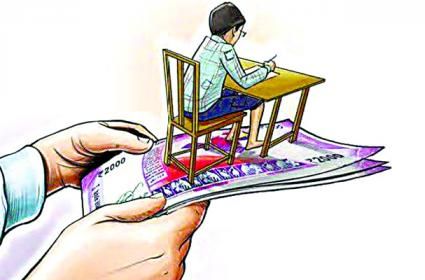By: Javid Amin
The education system in Kashmir has been a topic of discussion and debate for many years. With its unique challenges and opportunities, the region has seen efforts to improve the quality and accessibility of education. In recent times, there has been a growing trend of high-profile role models endorsing the education system in Kashmir. While this may seem like a positive development, there are concerns about the ways in which these endorsements are obtained, the impact on parents, and the sustainability of such efforts.
One of the strategies being used to promote the education system in Kashmir is through the endorsement of high-profile role models. These role models, who are usually prominent individuals from various fields such as sports, entertainment, or politics, are seen as influencers who can inspire and motivate the youth to pursue education. These endorsements are often done through advertisements, public appearances, or social media campaigns, and are aimed at creating a positive image of the education system in Kashmir.
One of the key questions that arise in this context is how these high-profile role models get paid for their endorsements. While the specifics may vary, it is common for these endorsements to involve financial compensation in the form of fees or honorariums. These payments are often made by educational institutions, government agencies, or private sponsors who seek to leverage the popularity and influence of these role models to promote the education system in Kashmir.
While the intent behind these endorsements may be well-meaning, there are concerns about the potential burden it may place on parents. The fees or honorariums paid to high-profile role models for endorsing the education system in Kashmir may add to the already existing financial challenges faced by parents in the region. Many families in Kashmir struggle with economic hardships, and additional expenses associated with endorsements may not be feasible for them. This could potentially create an inequality in access to education, where only those who can afford to pay for endorsements may benefit from the improved image of the education system.
Another aspect to consider is the sustainability of such efforts. While the endorsements by high-profile role models may create short-term buzz and visibility for the education system in Kashmir, it is important to assess the long-term impact of these efforts. Sustained improvements in the quality and accessibility of education require systemic changes, such as investments in infrastructure, curriculum development, teacher training, and policy reforms. Relying solely on endorsements by high-profile role models may not be a sustainable solution to address the complex challenges faced by the education system in Kashmir.
In conclusion, the endorsement of high-profile role models in the education system in Kashmir has gained traction in recent times. While it may be seen as a positive development, there are concerns about the ways in which these endorsements are obtained, the impact on parents, and the sustainability of such efforts. It is important to ensure that any efforts to promote the education system in Kashmir are inclusive, sustainable, and aligned with the long-term needs and aspirations of the youth in the region. Collaborative efforts between government, educational institutions, and communities, taking into consideration the financial and systemic challenges, are essential to create a robust and inclusive education system in Kashmir that benefits all its students.
Javid Amin
Editor: Shohrat / Kashmir Post / Kashmir InFocus




